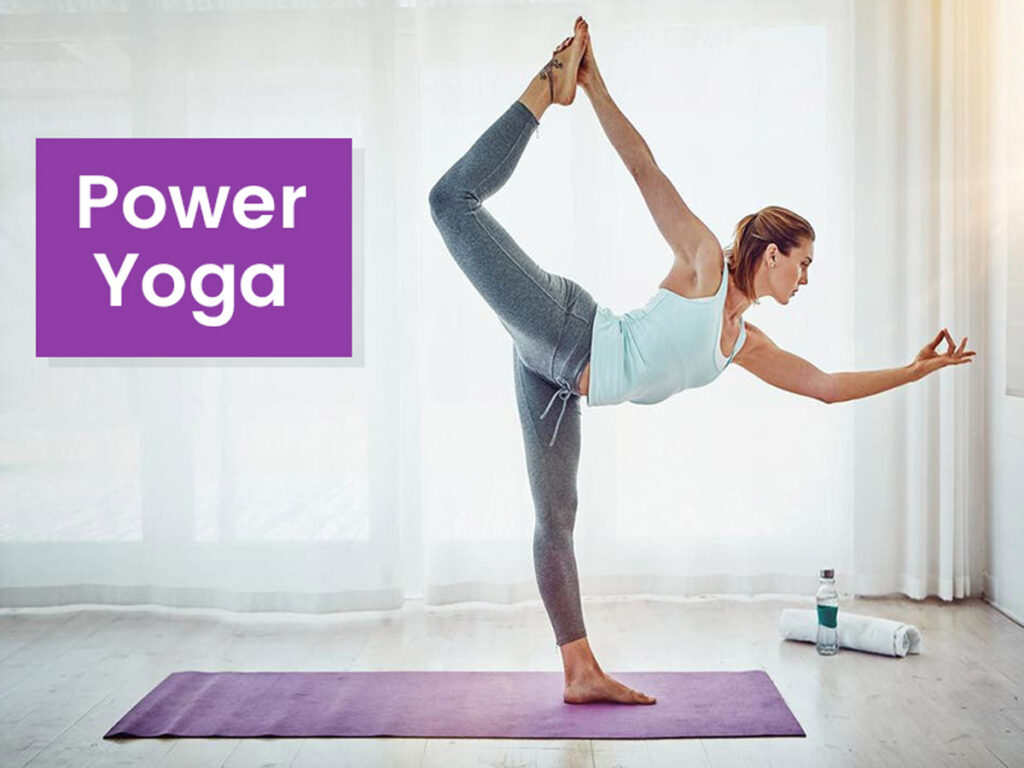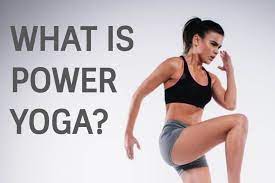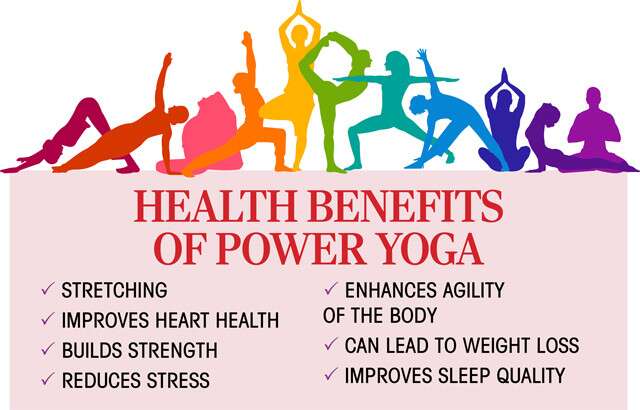Power yoga
Power yoga is a vigorous and dynamic style of yoga that combines elements of traditional yoga poses with a faster-paced and more athletic approach. Here’s an overview of power yoga:
Physical Intensity: Power yoga is known for its physical intensity and challenging nature. It incorporates strength-building poses, flowing sequences, and continuous movement, which can increase heart rate, build muscular strength, and improve flexibility.
Vinyasa Flow: Power yoga often follows a vinyasa flow style, where poses are linked together with smooth transitions and synchronized with breath. The continuous flow of movements creates a dynamic and energetic practice.
Strength and Endurance: Power yoga focuses on building strength and endurance through a series of demanding poses. It typically includes standing poses, balances, inversions, core work, and sometimes arm balances. The practice emphasizes engaging the core and using body weight for resistance.
Breath Awareness: Like other forms of yoga, power yoga emphasizes breath awareness. Coordinating breath with movement helps to create a meditative and focused state of mind, while also supporting the physical demands of the practice.
Flexibility and Mobility: Power yoga helps improve flexibility and mobility by incorporating a wide range of poses that stretch and lengthen the muscles. Regular practice can enhance joint mobility and increase overall flexibility.
Mind-Body Connection: While power yoga has a strong physical emphasis, it also promotes the mind-body connection. The emphasis on breath awareness, concentration, and being present in the practice can cultivate mindfulness and promote mental clarity.
Customization and Adaptability: Power yoga can be tailored to individual needs and abilities. Teachers may modify poses or provide variations to accommodate different levels of experience and flexibility. It can be challenging for beginners, but modifications and props can be used to make it accessible.
Health Benefits: Power yoga offers various health benefits, including improved strength, flexibility, balance, and cardiovascular fitness. It can help in reducing stress, increasing body awareness, and enhancing overall well-being.
It’s important to note that power yoga classes may vary depending on the instructor’s style and approach. If you are new to power yoga or have any health concerns, it’s advisable to consult with a qualified yoga teacher or healthcare professional before starting a power yoga practice. They can guide you in proper alignment, technique, and ensure that the practice suits your individual needs and abilities.




